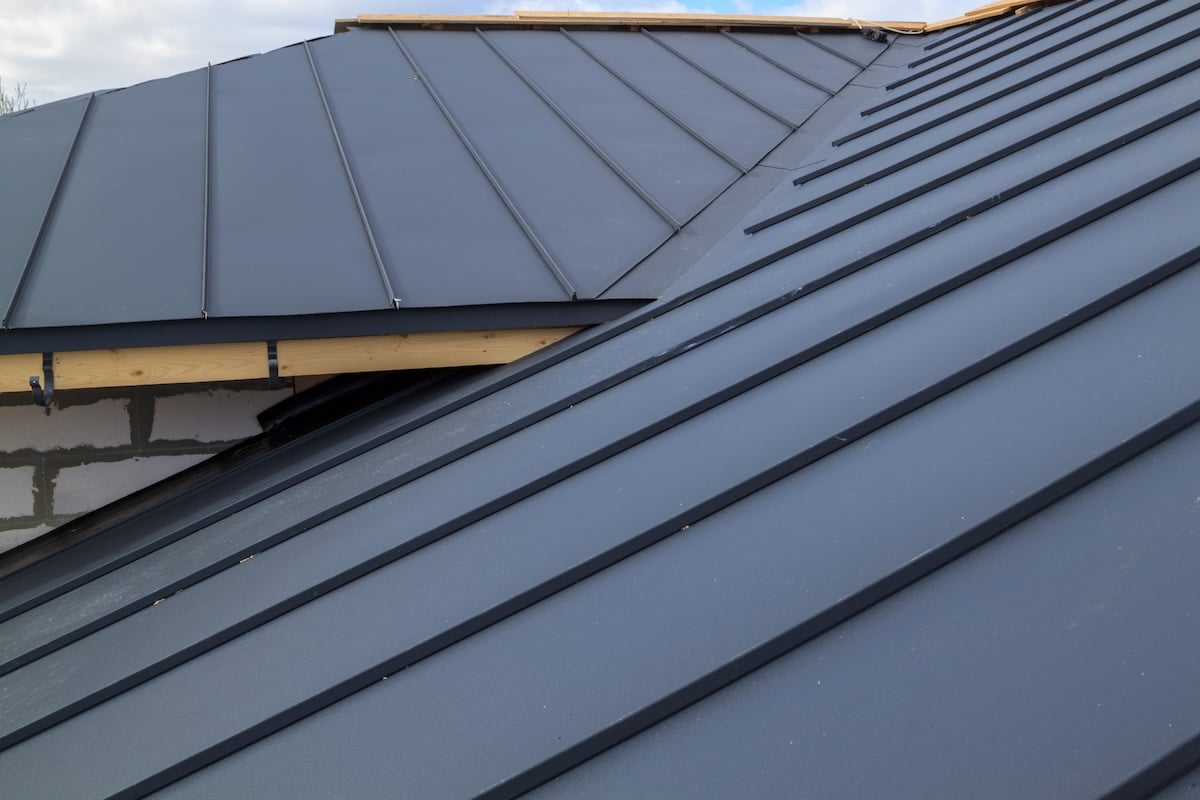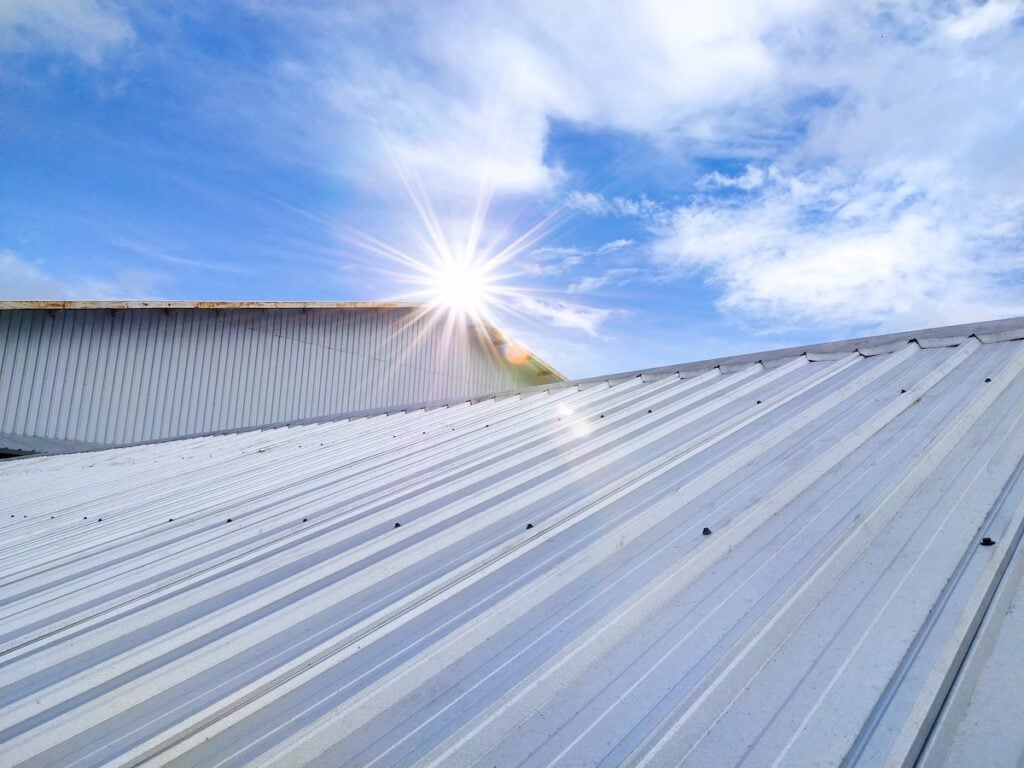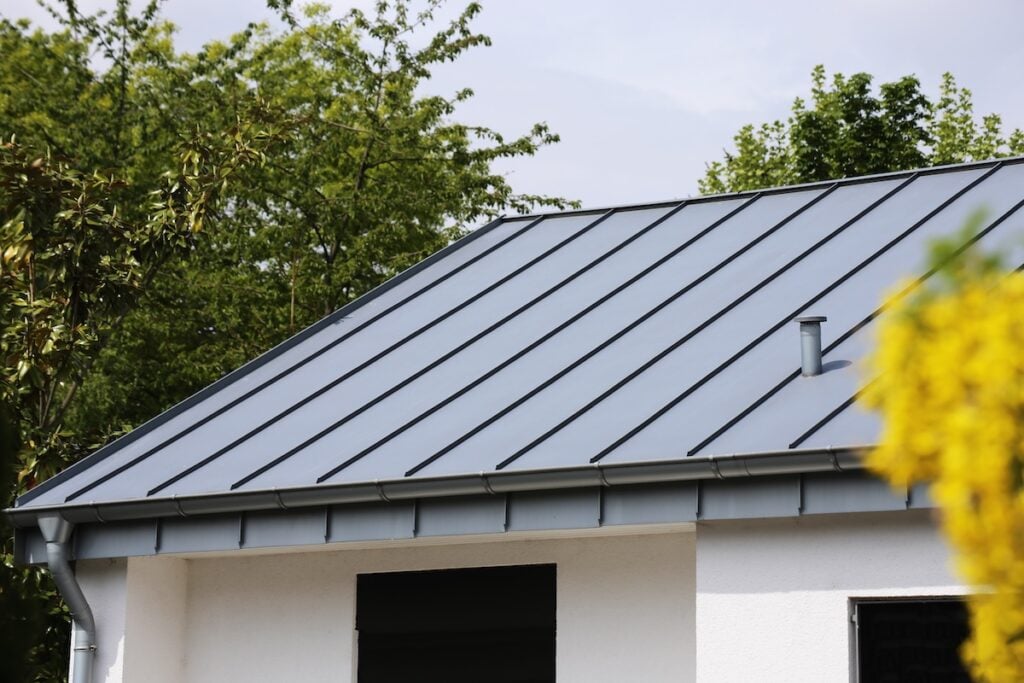
What Is The Minimum Slope For Metal Roofs?
The minimum slope for metal roof installations depends on the type of panel system used and how much water drainage is needed for your home. In Texas, where sudden rainstorms and strong winds are common, understanding the right slope ensures long-term roof performance and protection.
In this guide, we’ll explore:
- Recommended slope requirements: Based on different metal roofing systems
- Why slope matters: For water drainage, wind resistance, and warranties
- What to ask your roofer: Before starting a metal roof installation
If you’re considering a metal roof for your Texas home, getting the slope right is one of the most important decisions you’ll make.
📐 Why Slope Matters on a Metal Roof
Slope, also known as “pitch,” refers to the steepness of your roof and is measured as the vertical rise over a 12-inch horizontal run. For example, a 4:12 pitch means the roof rises 4 inches for every 12 inches of horizontal span.
A proper slope ensures:
- Effective drainage: Prevents standing water, which can lead to leaks or rust.
- System performance: Some roofing panels are only rated for certain slopes.
- Manufacturer warranty compliance: Many warranties are voided if installed at too low a pitch.
In Texas, where rainfall can be intense and winds can push water sideways, choosing the right slope is essential to prevent water intrusion under the panels.

🏠Minimum Slope for Different Types of Metal Roofing
The minimum slope requirement varies depending on the type of metal panel system you use. Here are the most common types and their guidelines.
Standing Seam Metal Roofs
Standing seam roofs are the most common premium metal option for residential homes. They feature vertical panels with interlocking seams that rise above the panel level to help shed water.
- Minimum slope: 1/4:12 to 3:12, depending on the seam type
- Low-slope options: Snap-lock systems usually require a minimum 3:12 pitch. Mechanically seamed panels can go as low as 1/4:12 if properly sealed and installed.
Pro Tip: For low-slope roofs, a mechanically seamed standing seam system with sealant is recommended for leak protection.
Corrugated Metal Panels (Exposed Fasteners)
Corrugated or “ribbed” metal panels with exposed fasteners are popular for sheds, barns, and some residential homes.
- Minimum slope: 3:12 is generally the lowest safe pitch
- Risk of leaks: These systems are not recommended for low-slope applications due to visible screw penetrations that are more prone to leaks.
Pro Tip: Avoid using exposed fastener panels on any roof with a slope less than 3:12.
Metal Shingles and Stone-Coated Steel
Metal shingles and stone-coated steel roofing mimic the look of asphalt or tile but use interlocking panels.
- Minimum slope: 3:12, per most manufacturer specs
- Great for: Texas homes wanting a classic look with the strength of metal.
🤔 What Is Considered a “Low-Slope” Roof?
Any roof with a slope less than 3:12 is considered low-slope. These roofs are more susceptible to ponding water and require a metal roofing system that’s specifically designed to handle moisture.
- Low-slope example: A roof that rises only 2 inches for every 12 inches of horizontal run.
- Best metal option: Mechanically seamed standing seam with factory-applied sealant.
Roofers must take extra care with panel alignment, seam sealing, and underlayment to prevent leaks on these roof types.
📋 7 Factors That Affect Minimum Slope Requirements
When designing or retrofitting a metal roof, your contractor will consider these key factors when determining the correct minimum slope.
- Panel System Type: Standing seam vs exposed fastener vs metal shingles all have different requirements.
- Local Weather Conditions: Areas like Houston or Dallas with heavy rainfall and wind may require steeper slopes to drain water effectively.
- Roof Length/Span: Longer roof runs may require steeper pitches to avoid water buildup.
- Underlayment System: High-quality underlayment can add extra protection, especially on lower slopes.
- Building Codes: Texas cities often follow IBC or IRC guidelines, which set minimum slope requirements based on materials.
- Manufacturer Specifications: Always follow the specific slope recommendations to preserve warranties.
- Intended Use: Is the building residential, agricultural, or commercial? Roof slope recommendations may vary by structure type.
✅ Best Underlayment for Low-Slope Metal Roofs
On low-slope installations (less than 3:12), underlayment is especially important for leak prevention. Your contractor should use:

Ice and Water Shield
This self-adhering membrane creates a watertight seal around the roof deck and penetrations.
- Best for: Areas prone to heavy rain or wind-driven water.
- Application: Required from eaves up to 24″ inside the exterior wall line in some municipalities.
Synthetic Underlayment
For slopes above 3:12, high-quality synthetic underlayment provides durability and heat resistance.
- Benefits: Lightweight, tear-resistant, and breathable.
- Long lifespan: Won’t deteriorate as quickly as felt paper.
Your underlayment should match the metal roof system and slope for best performance and code compliance.
⭐️ Can You Install a Metal Roof on a Flat Roof?
No. Metal roofing systems are not suitable for completely flat roofs (0:12 slope). These roofs require a fully adhered membrane system like TPO or modified bitumen.
If your home has a flat or very low-slope roof (less than 1/4:12), your roofer may:
- Add slope: Build a slope into the roof using tapered insulation or framing.
- Use alternative materials: Install commercial-grade flat roof membranes instead of metal.
Always consult a qualified roofing contractor to evaluate your roof’s existing pitch before choosing a metal system.
✅ Benefits of a Properly Sloped Metal Roof in Texas
Installing your metal roof at the correct slope offers more than just code compliance—it directly impacts the long-term performance of your roofing system in Texas.

Water Resistance
- Prevents pooling: Minimizes the risk of standing water that can lead to leaks or rust.
- Better runoff: Helps move heavy rainfall off the roof faster.
Wind Protection
- Stronger performance: Proper slope and fastening help your roof resist uplift from Texas storms and hurricanes.
- Reduced pressure points: Aerodynamic shapes minimize areas where wind can catch or lift panels.
Energy Efficiency
- Improved airflow: Correct slope encourages air circulation and attic ventilation.
- Cool roof potential: Reflective metal panels reduce heat gain, lowering cooling costs in hot climates.
💪 Work With a Trusted Texas Roofer for Proper Slope and Performance
Understanding the minimum slope for metal roof installations is critical for durability, drainage, and code compliance, especially in Texas, where the weather can be extreme. Whether your roof is steep or low-sloped, choosing the right panel system and installation method makes all the difference.
At M&M Roofing, we specialize in installing metal roofs built to handle Texas storms, heat, and humidity. Our team will evaluate your roof’s pitch, recommend the best materials, and ensure every installation meets or exceeds the manufacturer’s guidelines.
Contact M&M Roofing today for a free estimate. We’ll help you determine the right slope and system for your metal roof so you can enjoy beauty, performance, and peace of mind for years to come.
